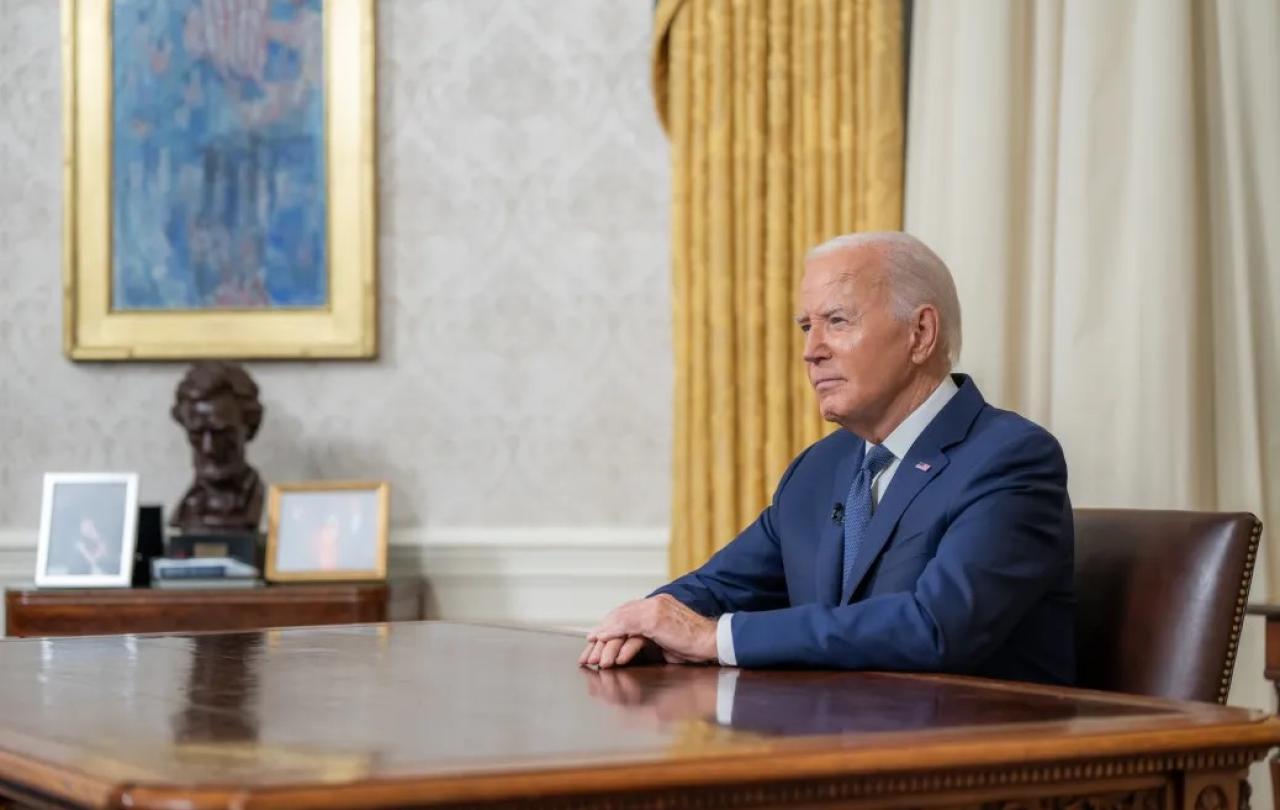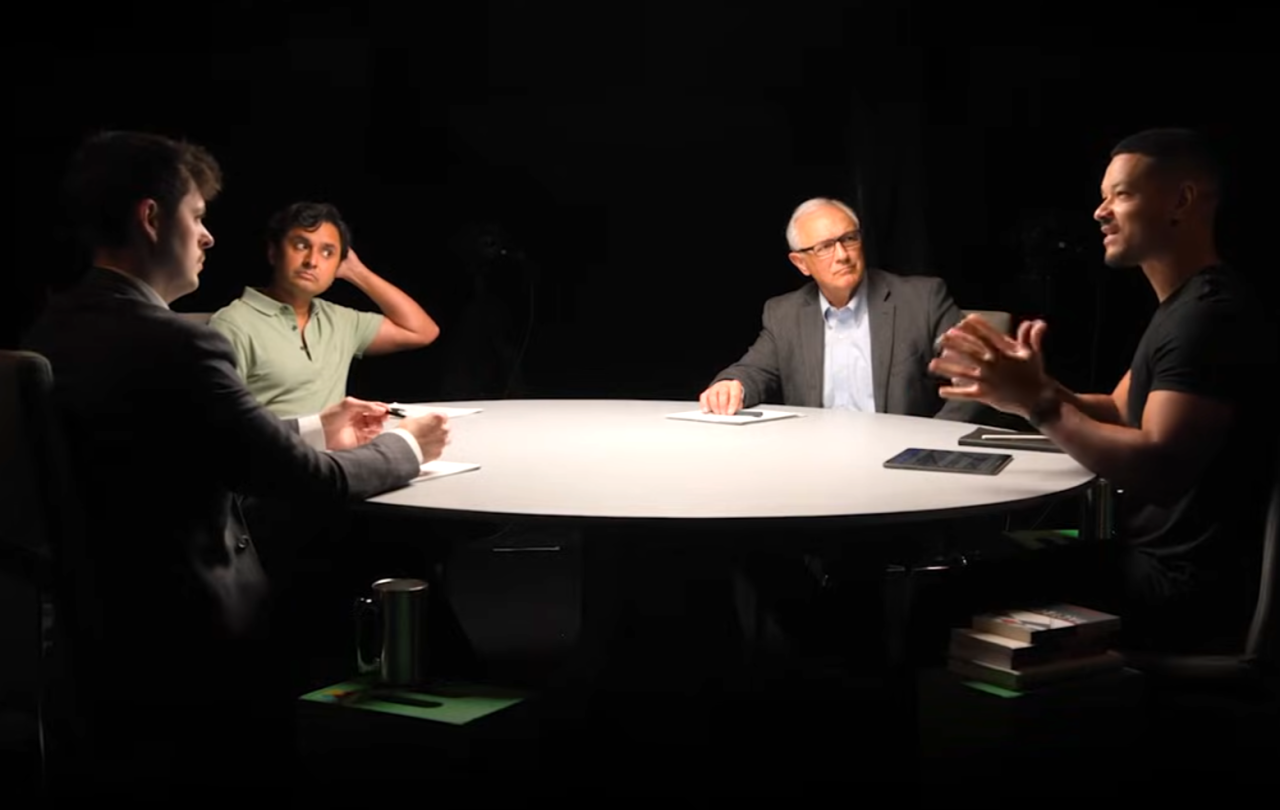
Joe Biden has finally quit. After weeks of resistance to the clamour of Republican voices telling him to withdraw from the race to be re-elected, he finally gave in and pulled out. A tweet was followed by a press conference where a stiff and weary looking Biden told the world that his campaign for a second term was over.
Just a few weeks ago, when asked if he would step down, he had said that “If the Lord Almighty comes down and tells me that, I might do it." Joe Biden is a man of faith. And so, it was a strange kind of prayer - perhaps just a throwaway line intended to reassert his determination to stand - but it raises an intriguing question. Did the Lord Almighty do just that?
I'm not sure what President Biden had in mind when he raised this possibility. Perhaps he envisaged some disembodied voice from the clouds, like Moses on Mount Sinai, booming out a personal message that it was time to step back? A vivid dream where God appeared to him? Maybe he was looking for mysterious handwriting on the wall, as happened to the Babylonian King Belshazzar? Was Joe waiting for something similar on the wall of the Oval Office as he drank his morning coffee?
As far as we know, none of those things took place. What did happen was more mundane. Struck down with COVID, holed away with his family and key advisors he was presented with evidence that there is no way he could beat Donald Trump and so he decided to pull out.
God normally speaks to us through ordinary human Interaction, through commonplace events that might happen to everyone.
Perhaps when most people think of God speaking, they have in mind a kind of Monty Python booming voice from the clouds, a message that is inescapably and undoubtedly divine. Yet the evidence of Christian history and the testimony of numerous Christians throughout the world and previous centuries suggest that that kind of communication is vanishingly rare. God usually delivers his message through more ordinary methods – so ordinary that it is very easy to miss it. In fact, the most definitive time God spoke to the human race, it wasn't in a booming voice from the skies, but in the words of a scruffy looking Jewish rabbi who looked as human as the rest of us.
Despite the mediaeval imagery, Jesus did not walk around with a golden halo around his head that served as a sign saying, ‘this is the Son of God!’ It was quite possible to meet Jesus, listen to him speak, even shake his hand, and entirely miss the fact that you were speaking to God.
As the early Christians thought through their Christology, in other words their understanding of how God and humanity came together in the person of Jesus, the main conclusion was that Christ’s divine nature did its work through, rather than apart from his human nature. It is not that some of his actions and words were divine (for example miracles, inspired teaching etc.) and some human (eating, sleeping and asking for directions) but rather that both human and divine natures were involved in all that he did - the human nature passively allowing itself to be the vehicle through which God did his work. So that when you met Jesus you could see God working perfectly through a human being in the way that we were always meant to.
For those who had the eyes to see it and the ears to hear it, although he looked and spoke just like an ordinary human, Jesus was far more than that - he was the one through which God definitively spoke to the human race.
All that suggests a very different way of God speaking to us. God normally speaks to us through ordinary human interaction and through commonplace events that might happen to everyone.
Joe's story perhaps teaches the rest of us to listen a little more intently to what comes our way.
So, when Joe Biden started to listen to the voice of his family and friends rather than stubbornly persisting with his doomed attempt to be re-elected, perhaps his secret prayer was being answered? Perhaps the Lord Almighty was telling him to step down, through the very ordinary voices of his friends and advisers. How do we know it was God? As I've argued elsewhere, in the question of whether God saved Trump from an early death, we can only definitively tell when God has intervened while looking backwards. Looking back on the past few weeks and months, might this be a case where we can begin to say with some confidence that Joe Biden was listening to the one voice that could have told him to step back?
It sounds like he obeyed unwillingly. In his speech from the Oval Office, he continued to claim that he deserved a second term (does any leader in a democracy deserve election? Is it not always a gift and a privilege?) He continued to proclaim a rather fantasy-laced vision of the USA: “we are the United States of America and there is nothing beyond our capacity”, claiming the limitless power of his nation at a time when he should have been more aware of his own limits and finitude.
But maybe we all do that from time to time. Let us give credit where credit is due. He did finally, reluctantly, perhaps grudgingly, listen to the voice of the Lord Almighty telling him to quit.
Listening for the voice of God is an art and not a science. Wisdom comes to us usually through very ordinary human means and it takes a lifetime of listening, reading of Scripture, discerning the difference between the kind of thing God would say - which is the kind of thing Jesus would say - and the things that he wouldn't. Joe's story perhaps teaches the rest of us to listen a little more intently to what comes our way, to hear when God might actually be speaking to us - through the ordinary events and voices that surround us every day.





